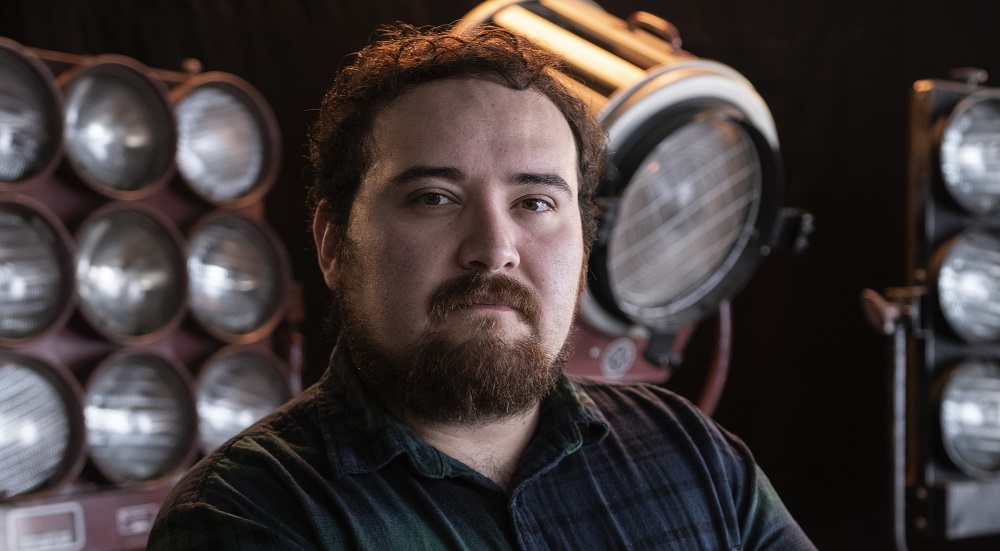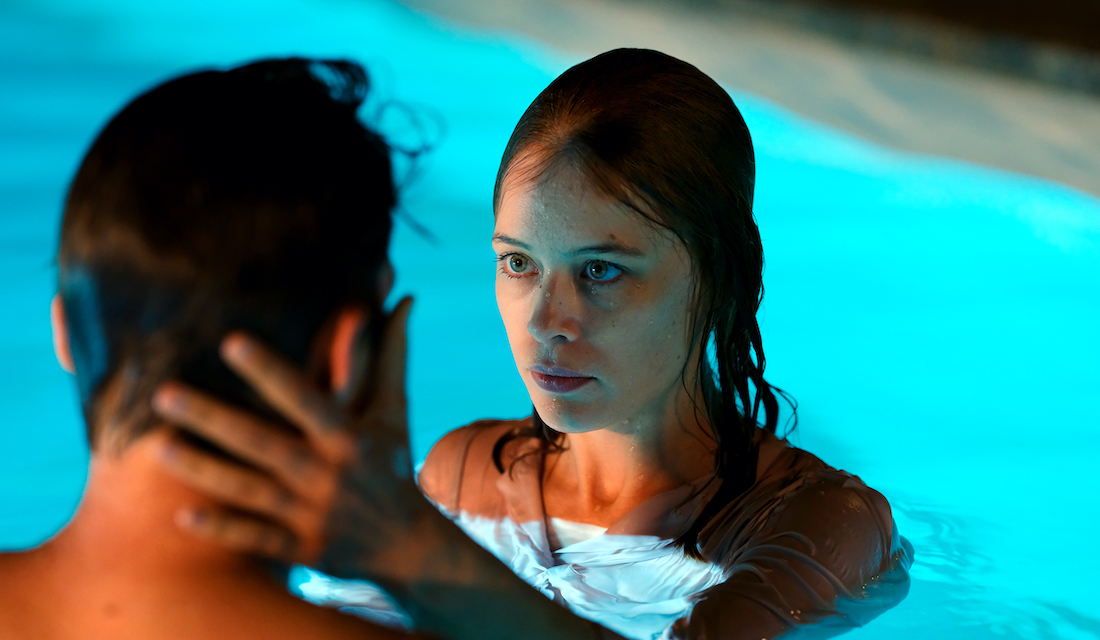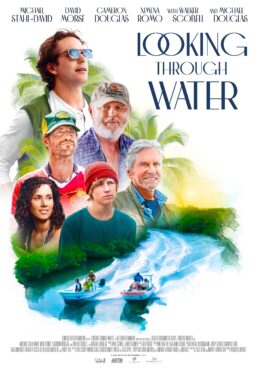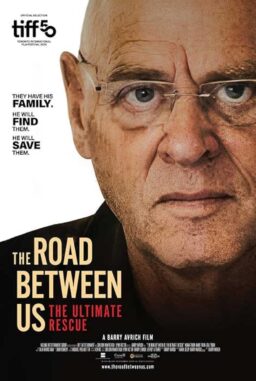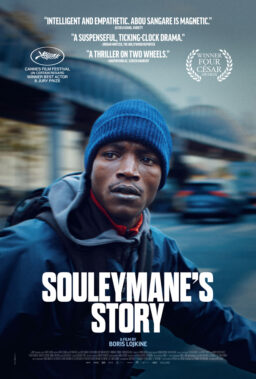Truth be told, the characters in the films of German director Christian Petzold rarely tell the full truth about themselves. Their identities shift depending on their intentions, which are often motivated by the love of another and the circumstances that prevent them from being together. “Undine,” his latest exploration of hazardous romance, expands his reach into Greek mythology, where the title entity is said to be a water nymph that needs to marry a human man to get an eternal soul. The men’s lives, however, hinge on the duration of the affection.
Paula Beer and Franz Rogowski, two of Europe’s most prominent actors, return to Petzold’s artistic grasp after starring in his acclaimed and uniquely historical narrative “Transit.” In the filmmaker’s interpretation of the ancient tale, Undine (Beer) works as a freelance guide at a Berlin museum dedicated to the architectural history and urban planning of the city. Following a breakup, she serendipitously meets Christoph (Rogowski), an underwater welder. A torrid romance manifests until the mystical mechanics of the curse that reigns over Undine’s existence interferes.
No stranger to crafting heartbreaks at the intersection of past and present, Petzold grounds his take of the tragic tale in the relatable stakes of commitment, betrayal, and forgiveness. Speaking from the German capital, the cheerful filmmaker talked to RogerEbert.com about some of the recurrent tropes that affect his jilted characters.
History is very pertinent to all of your films it seems, whether they are period pieces like “Phoenix” or “Barbara,” or contemporary like “Undine.” What’s the reasoning behind Germany’s past being so present in your work?
For me cinema always has to be contemporary. I don’t really like period pictures, I must say. My work on “Phoenix” was such hard physical work having old stagecoaches or old ruins. I didn’t like going to Poland to find streets that would look like they had been bombed during the Second World War, and see that there are poor people in the houses, and we have to pay them so that they don’t look out of the window during our shooting. I don’t like that situation. In period pictures you build up a world and you’re not part of it. The studio life is not my life.
For me history is always in the contemporary world. When I’m leaving my apartment here and I go through my Berlin street, there are memory stones in the ground with the names of the Jewish people who had lived in the houses and who were killed by the Nazis in the concentration camps. There are stones in front of the houses. So history is always inside our contemporary world. And I’ve tried to make movies, also period movies like “Transit,” for example, that exist in past history and in our times at the same time. Cities are also a little bit like this. They are contemporary and they are history, at the same time. When I make a historical period picture, I try to make it as a contemporary picture.

In this case, Undine, the character, is very well versed in the architectural history of the capital. She shares her knowledge of how the town has changed with visitors at the Berlin City Museum. Knowing that she is a mythical figure explains why she is so familiar with the information, but why did you select this specific gallery and the city planning models to be her domain?
I love this place in Berlin. A director friend of mine, Christoph Hochhäusler, showed it to me many years ago. It’s like going into a church. There’s no one inside. You don’t have to pay entrance. There’s this big model and you can go there and see the history of Berlin and the future of Berlin because the brown houses in the model are the houses they want to build the next 10 years.
Think of Alain Delon in “Two Men in Town,” who is just coming out of prison, he goes into a church or a billiard hall to contemplate, to find himself. For me, this place, with these Berlin models is such a place where I can come contemplate. I love it. Also my children, sometimes they go there when they have problems and they want to have a quiet hour. They sit there. It’s a place where you feel the history, you can see the future, but in this moment you are in our present time. I love this place. Therefore, I chose it.
Later I have a thought that Undine, the character, has been on earth for more than two or three centuries. She knows everything, but nothing has changed. Everything’s the same. Every man betrays her. She has to go and then come back to our world. There is no development and she’s searching. She has a desire for development, to come out of the curse. And I think we also have a desire for development when we are looking at the history of Berlin. We don’t want these retro houses and these retro castles. We want development. That’s why it was a good idea to choose this place.
Up to this point, when you have dealt with history in your films the treatment of the past is more factual, even when playing with time. With “Undine” you are diving fully into mythology, even if the story remains grounded.
Cinema has more to do with oral history, with songs, ballads, and tales and not so much with the literature. Therefore, I look at German songs and the German tales and the German myths and curses, and also the bad German history to find the stories. I’m reading more of The Brothers Grimm and their tales for cinema more than I am reading a book about scriptwriting.
Since you find great inspiration in folklore, were you already an expert in the story of Undine or was there substantial research in order to bringing into the modern era?
I never do big research. I read the myth of Undine when I was around 22 or 23. I had it wrong in my mind back then. But when I started to write the script, I didn’t read it again. I just wanted to write a script about the things I remembered. It’s a little bit like songs you’ve heard but you can’t remember all the lyrics so you change them to your own a little bit. It’s not wrong to create your own memory.
The underwater sequences, especially towards the end of the film, are the instances that feel the most detached from reality, like we are truly in another realm. Is that how you interpret them?
I’ve had a wish for a long time to shoot underwater sequences. I saw Brian Eno, the musician, had worked on an installation were there were TV sets with their screens pointing to the roof and under the glass of the TV sets there was water flowing. For me, water and TV and movies relate with each other. So when the camera goes underwater we have no dialogue. We are going back to the origins of our life, fish. And the movement of our bodies is so graceful. I had a very old desire to go underwater. But I also can’t dive and I have a big fear to going underwater. So I stayed outside the whole time, and watched the underwater sequences on the monitor. But for me being underwater is a fantastic world. It’s like the space outside our planet or as if we returning to our origin.
Looking at those underwater sequences, and in general the symbolic nature of water in “Undine,” I was reminded of one of your previous films, “Yella,” where water is also a crucial part of the female protagonist’s journey. Both of these films, as well as most of your works, have been shot by Hans Fromm. Was it an interesting change of pace for him to shoot underwater?
For Hans, the DP, I think it was a good time being underwater, because now he had a friend, the other cameraman who was going with his camera underwater. Two guys, male technicians, they were happy, like two men barbecuing on a grill. They were talking about cameras and lenses. I was totally outside of that conversation. They never talked to me. So, for him it was good. But thinking about the water in “Yella,” there was this river Elbe, a really big German river. On one side there was East Germany and on the other side there was West Germany. Back then it was a border between communism and capitalism. Yella tried to go over this river to reach capitalism because she’s coming out of communism. But she drowned in this border river and as she dies she can see a life she never had. She sees the life she wanted to have. This was the idea of the water there. The water is a border, but she didn’t have the chance to come out of this water to the desired land, to the capitalistic neoliberal world.

Another aspect of your movies that I find fascinating is you always play with your characters’ identities, including Undine in this one. Most of the women in your stories are hiding who they really are or pretending to be something they’re not.
My friend Harun Farocki and I worked many years together. We wrote 15 scripts together and we talked so much about cinema. We always thought that a wrong identity is a fantastic element in cinema. The bad thing about a wrong identity is that if you want to change your identity—you go out for cigarettes and never come back. You leave your family, kids, or woman and go into a new life—actually what you do is rebuild the life you left again. You can’t actually get out of your skin. You are still you. But the desire to get out of your skin, this is cinema, not what happens in the end, but just the desire to change your identity, to have another life. This is the thing I like to see very much.
Both Paula Beer and Franz Rogowski starred in your previous feature, “Transit”; was the transition into these new, rather different parts, challenging for them or for you considering that film and “Undine” were done relatively close to one another?
It was not so difficult because I changed it a little bit. In “Transit,” Franz is masculine. He’s male. Marie, played by Paula, she is really a young girl. She’s really feminine. In “Undine” it’s the other way around. For me, Undine had more of male presence. She’s the protagonist. She is similar to a male hero. And Franz, he is the innocent woman this time. He doesn’t have any bad thoughts in his mind. He’s just the lover. The idea was to turn it around, and I think they both liked this new dynamic.
Seems like you were very clear in term of the energy each of them projects in each project. Did you ever consider casting other actors, for one or both parts, in the event that they were interested or available?
I wanted them from the beginning because I created the script for “Undine” after my experience with them in “Transit.” I talked to them on the 25th day of shooting and said I had a fantastic script, “Undine,” that I’d written for them. But it was a lie. I hadn’t got anything written yet, but I was so impressed by them. It’s not so often that I like the actors so much. I liked both of them very much so I wanted to continue to work with them as a couple. So I had to lie about having a script and then I had to write the script in six weeks so that they could believe me.

The majority of your films are centered on a relationship between a man and a woman that’s very complex and affected by outside factors. Is that core premise something that you deliberately begin each screenplay with, meaning that you try to adapt whatever you are interested in into that format, or do the stories you want to tell naturally take that shape?
It’s got something to do with an old plan that Harun and I had. We wanted to tell the story of our lives through a love story, because a love story in the ’20s in Berlin is not the same love story nowadays in Berlin or a love story in Paris is not the same that one in Rome or in New York. Within a love story you can get a sense of the times, you can see the social structures, you can feel the desire for deliverance. You can feel everything because what is happening between a man and a woman, or man and another man, or woman and another woman is a laboratory. Love is a laboratory and it’s also something very innocent at the same time.
In your early movie watching days, were you always attracted to the potential of love stories?
When I was younger and I saw movies set in a submarine, for example, there were no women, just 18 men in the submarine. I was a little bit disappointed from the beginning that there was not going to be a love story. It’s just about men being honest. But after some time I realized that the good submarine movies are movies in which the submarine itself is the woman or the love interest. Then it gets interesting.
I’m not sure if this is a conscious motif in your films or just something that my eye catches whenever I watch them, but it often seems that the women on screen are always looking over their shoulder, or over their lover’s shoulder when embracing them. It’s a shot that I tend to associate with your stories.
It’s because the women who are the protagonists, the main characters in my movies, these women can never be sure about what is happening around them. They want to kiss, they want to love, they want to live, but they’ve always had to mistrust the world. When they’re kissing, they have to look over their shoulder to see if there’s someone with a gun. Their whole life is surviving and they can’t trust anybody. I like those paranoid characters, male or female. They have to look over the shoulder because the enemies are always coming for them.
Now playing in select theaters and available on digital and VOD platforms.
